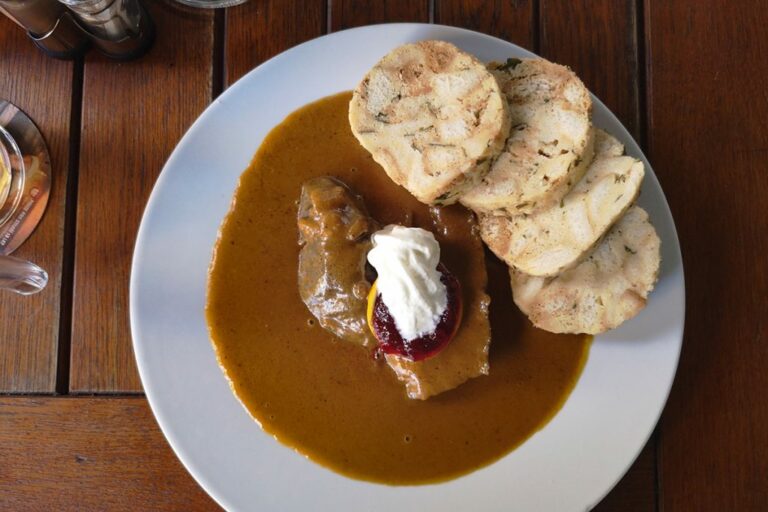Introduction to Slovak cuisine
Slovak cuisine is a blend of various cultural influences, reflecting the country’s rich history. The cuisine is characterized by its hearty, meat-based dishes, and the use of simple, locally sourced ingredients. Slovak cuisine is also known for its delicious soups, stews, and dumplings.
Traditional Slovak dishes
Some of the most popular traditional Slovak dishes include bryndzové halušky (potato dumplings with sheep cheese), kapustnica (sauerkraut soup with sausage and smoked meat), and goulash (a stew made with beef, onions, and paprika). Other popular dishes include pirohy (stuffed dumplings) and čevapčiči (grilled minced meat). Slovak cuisine also includes a variety of sweet treats, such as buchty (sweet buns filled with jam or poppy seeds) and zemiakové placky (potato pancakes).
Common ingredients in Slovak cuisine
Slovak cuisine relies heavily on meat, especially pork, beef, and poultry. Dairy products, such as cheese and sour cream, are also commonly used. Potatoes, cabbage, and onions are staples in many Slovak dishes, along with paprika and caraway seeds, which are used to add flavor. Bread is a common accompaniment to meals, and is often baked fresh.
Dietary restrictions in Slovak cuisine
Slovak cuisine may not be the most suitable for those with dietary restrictions, as many dishes contain meat and dairy products. However, there are still options available for those who require a special diet. For example, some traditional Slovak dishes can be adapted to be vegetarian or vegan. Additionally, many restaurants in Slovakia offer vegetarian and gluten-free options on their menus.
Considerations for vegetarians and vegans
Vegetarians and vegans may struggle to find suitable dishes in traditional Slovak cuisine, as many dishes contain meat and dairy products. However, there are still options available. For example, bryndzové halušky can be made with a non-dairy cheese substitute, and pirohy can be filled with sauerkraut or mushrooms instead of meat. Many restaurants offer vegetarian and vegan options, such as vegetable soups and salads.
Conclusion: Enjoying Slovak cuisine with dietary restrictions
Although Slovak cuisine may not be the most accommodating for those with dietary restrictions, there are still ways to enjoy the delicious flavors of this cuisine. Vegetarians and vegans can still indulge in some traditional dishes, with a few adaptations. Those with gluten or lactose intolerance can also find suitable options in many restaurants. With a bit of research and creativity, anyone can enjoy the unique tastes of Slovak cuisine.

